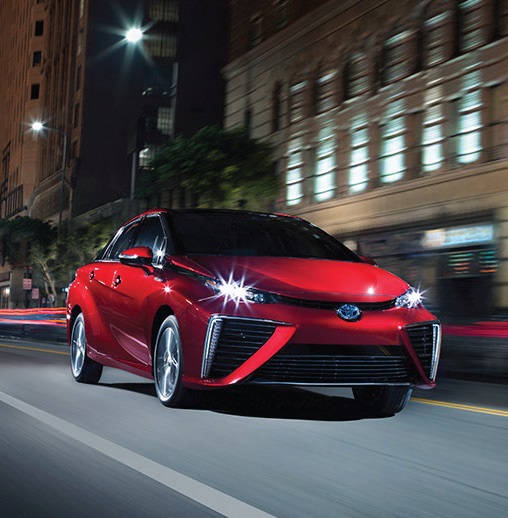The growth of electric vehicles
Michael P. Duncan | TLT President's Report November 2019
Their dominancy seems inevitable, but predicting exactly when is difficult.

STLE members are pioneering the research into lubricant solutions for electric vehicles.
Photo courtesy ssl.toyota.com
It is hard to believe, but I am halfway through my term as STLE president. The past few months have just flown by, starting with the STLE Annual Meeting in Nashville, Tenn.; an STLE Executive Committee meeting in Quebec City, Canada; STLE Upper Ohio Valley and Pittsburgh Section presentations; the International Tribology Conference (ITC) in Sendai, Japan; and last month’s STLE Tribology Frontiers Conference (TFC) in Chicago.
My travels have opened my eyes to the many diverse, energetic and passionate young and experienced tribologists and lubrication engineers in our global community. I’d like to thank the two STLE local sections and conferences for welcoming my attendance and participation.
With our future likely to involve autonomous and electric vehicles (EVs), our use of lubricants and the types of lubrication are sure to be impacted. Some of these changes will be gradual, like generating enough electricity to power these vehicles or providing the necessary power grid and transformers in homes and communities for electric vehicles or assuring complete safety for autonomous vehicles. Other changes might be more accelerated in countries like China, Japan, Korea and European nations. EV growth seems to be inevitable, but to predict exactly when it will happen is difficult, especially if the global economy slows down and/or governments remove or implement additional subsidies or policies on the introduction of EVs. However, there are those who predict we will move from three million EVs in 2019 to about 27 million by 2030 (
1).
Regardless of what the future of EVs looks like, I am proud to say that a great deal of the research and development for the tribology of EVs and the lubricants needed to help propel them are well underway by many of our member companies and their customers. In addition, some truly amazing research in tribology and lubrication engineering was displayed at the ITC (900 participants) and TFC (nearly 200).
Many presentations discussed that EVs require additional work to solve issues with electrification throughout the vehicle in terms of stray electric fields, corrosion in battery mount structures and braking systems. In addition, EVs require tribological research on proper torque transmission and steering systems as well as battery charging (heating and cooling). Job security for tribologists and lubrication engineers!
Besides EV research and development, the ITC and the TFC highlighted critical areas that require tribological and lubrication solutions: basic understanding of how solid lubricants work; extending friction modifier life in motor oils; theory, simulations and predictors for surface chemistry interactions; new bearing materials; surface modifications and coatings; novel lubricant additives;
in situ test methods for predicting adhesion and wear; bio-tribology; energy conservation; new lubricants for aerospace and trains, etc.
The good news is we have both young and experienced tribologists and lubrication engineers ready to take on these problems and provide the necessary solutions. Especially impressive was an event at the ITC that featured a joint STLE and Japanese Society of Tribologists symposium with 27 presentations from young tribologists.
Our future is never predictable, but I am very glad to see STLE is welcoming and participating in programs that will benefit our members for years to come.
REFERENCE
1.
Available
here.
Mike Duncan is executive vice president of technology of Daubert Chemical Co. in Chicago. You can reach him at mduncan@daubert.com.